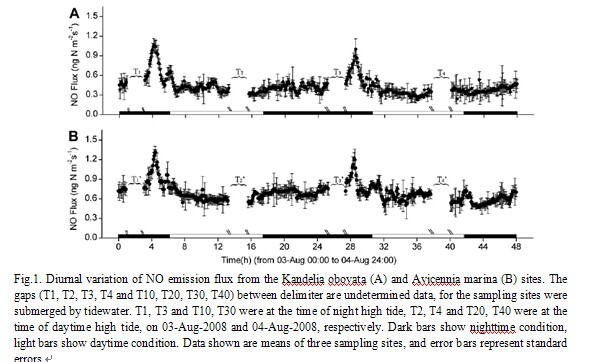Chen J., Wu F.H., Xiao Q., Yang Z.H., Huang S.K., Pei Z.M., Zheng H.L.*Estuarine, Coastal and Shelf Science, 2010. 90: 212-220.
The diurnal variation of nitric oxide (NO) emission fluxes from a Kandelia obovataand Avicennia marinamangrove wetland were studied in the Zhangjiang River Estuary Mangrove National Nature Reserve using a dynamic chamber-based technique and a chemiluminescent analyzer. Results from field experiments show that NO emission fromK. obovataandA. marinasampling sites reached maximal values of 1.07 ng N m-2s-1and 1.23 ng N m-2s-1, respectively after the night tide. Meanwhile NO emission maintained at a steady lower level in daytime for both wetland sites. In laboratory experiments, NO emission from the mangrove wetland soil samples treated with simulated tides in the darkness exhibited higher values than those in the light, therefore it seems that tides and darkness could increase NO emission from mangrove wetlands, while intensive light, high temperature, and dryness in the daytime decreases NO emission. Compared withK. obovatasoil samples, the diurnal average NO emission rate of theA. marinasite was significantly higher, which was closely related to relatively higher diurnal average CO2emission rate, soil available nitrogen content and soil net nitrification rate of theA. marinasite. Moreover, soil samples of theA. marinasite were more responsive to simulated tides and the addition of nitrogen than those of theK. obovatasite.


